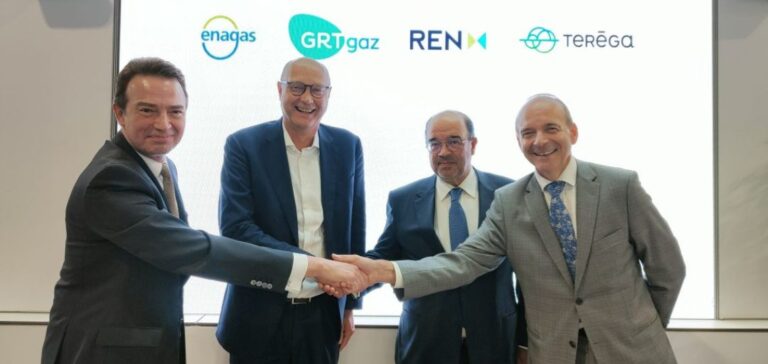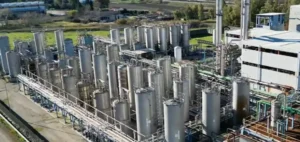A consortium of European Transmission System Operators (TSOs), consisting of Enagás (Spain), GRTgaz and Teréga (France) and REN (Portugal), has launched the “Green2TSO” initiative. This open innovation project aims to integrate new technologies to promote the development of hydrogen in the transportation network. It is aligned with the European Commission’s objective to strengthen the role of European TSOs as carriers of clean, secure and efficient energy through their large-scale infrastructure.
Green2TSO: a decisive step for the development of renewable gas infrastructures in Europe
European TSOs play a key role in the transportation of the clean, safe and efficient energy carrier hydrogen through their large-scale infrastructure. The Green2TSO initiative aims to transform the gas network into a hydrogen network through open innovation. The project is aligned with the European Commission’s Green Deal, Fit for 55 and REPowerEU initiatives. The European TSOs have signed this agreement to meet the needs of decarbonization of the economy and energy independence of the European Union, as presented in the European strategy REPowerEU.
A major agreement towards the European energy transition
Rodrigo Costa, REN’s CEO, emphasizes that this agreement is a major step towards the European energy transition. This Green2TSO initiative between four gas TSOs is essential to stimulate research and innovation in the field of hydrogen. This is an important step towards the implementation of the future European Hydrogen Backbone in a context of decarbonization of industry and transport. Dominique Mockly, CEO of Terega, notes that Green2TSO is an essential step in the implementation of the future European Hydrogen Backbone in a context of decarbonization of industry and transport.
SMEs and open innovation supported by the European Commission
The European Commission recognizes the importance of SMEs and open innovation as drivers of technological change. Thus, it encourages cooperation between Member States to accelerate the transformation of the natural gas network. The European Commission-supported “Green2TSO” initiative will conduct pilot projects, technology trials and other activities to prioritize technologies for leak detection, compression and above-ground storage of hydrogen, as well as possible alternatives for pipeline lining and cleaning.
Green2TSO OPHTYCS” project selected by the European Commission for co-financing
Within the framework of the “Green2TSO” initiative, a project called “Green2TSO OPHTYCS” in the field of hydrogen leak detection has already been selected by the European Commission for co-financing. This project is led by the developers of “Green2TSO” and aims to accelerate the transformation of the natural gas network by prioritizing leak detection technologies.





















